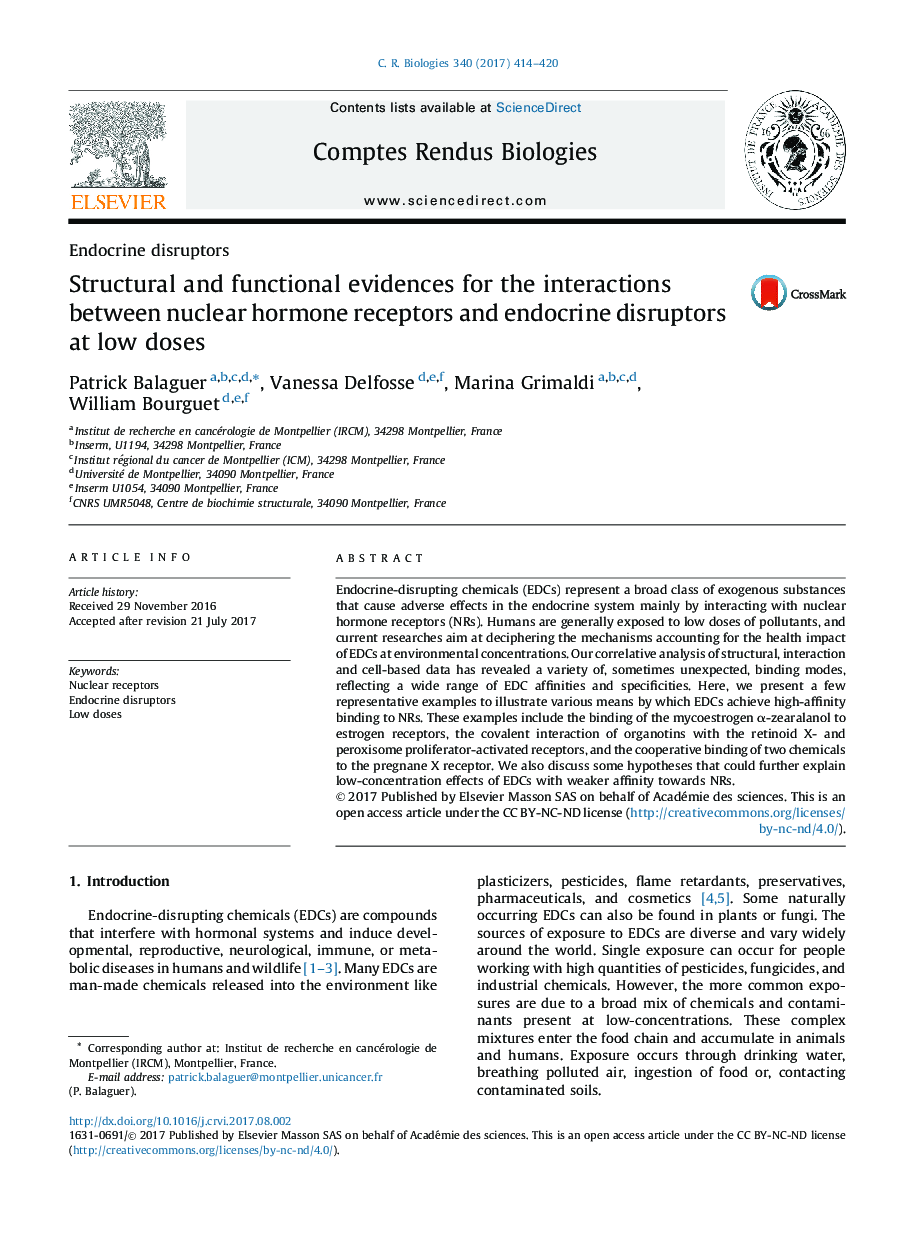| Article ID | Journal | Published Year | Pages | File Type |
|---|---|---|---|---|
| 8625567 | Comptes Rendus Biologies | 2017 | 7 Pages |
Abstract
Endocrine-disrupting chemicals (EDCs) represent a broad class of exogenous substances that cause adverse effects in the endocrine system mainly by interacting with nuclear hormone receptors (NRs). Humans are generally exposed to low doses of pollutants, and current researches aim at deciphering the mechanisms accounting for the health impact of EDCs at environmental concentrations. Our correlative analysis of structural, interaction and cell-based data has revealed a variety of, sometimes unexpected, binding modes, reflecting a wide range of EDC affinities and specificities. Here, we present a few representative examples to illustrate various means by which EDCs achieve high-affinity binding to NRs. These examples include the binding of the mycoestrogen α-zearalanol to estrogen receptors, the covalent interaction of organotins with the retinoid X- and peroxisome proliferator-activated receptors, and the cooperative binding of two chemicals to the pregnane X receptor. We also discuss some hypotheses that could further explain low-concentration effects of EDCs with weaker affinity towards NRs.
Related Topics
Life Sciences
Agricultural and Biological Sciences
Agricultural and Biological Sciences (General)
Authors
Patrick Balaguer, Vanessa Delfosse, Marina Grimaldi, William Bourguet,
